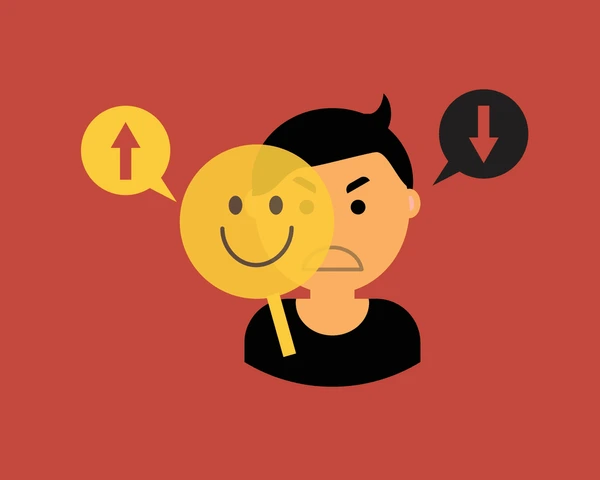
In today’s fast-paced society, toxic behaviors can easily go unnoticed, camouflaged as normal daily interactions. Many of these harmful patterns become part of our everyday routine, subtly affecting our mental well-being and relationships. This article dives into Behavioral Psychology to uncover eight insidious behaviors that we often accept as normal. By exploring their origins, understanding their impacts, and suggesting actionable remedies, we offer practical insights to transform your interactions and promote healthier habits. Get ready to challenge your perceptions and rethink the way you connect with the world.
Understanding Toxic Behaviors in Everyday Life
Our daily interactions are filled with habits so routine that we often fail to notice their toxic potential. When we talk about toxic behaviors, we refer to actions that inflict subtle harm, erode trust, and undermine self-esteem over time. Society sometimes inadvertently normalizes these patterns, which can fuel self-doubt and interpersonal tension.
Recent research in psychology shows that even normalized toxic behaviors have serious implications for our emotional and mental well-being. By uncovering the roots of these actions, we can start to identify warning signs and work on improvements in our personal habits and relationships.
This section explores why these harmful behaviors often go unnoticed, how they manifest in everyday life, and why early recognition is key. Understanding these patterns is not about judgment but about promoting growth, establishing healthy boundaries, and raising awareness.
Key Points
- Habits can mask underlying toxic behaviors.
- Subtle actions can have lasting negative impacts.
- Self-awareness is the first step toward change.
- Psychology helps us uncover hidden toxic traits.
The Roots and Impact of Toxic Normalization
Toxic normalization happens when harmful behaviors are so deeply ingrained in our daily lives that we start seeing them as acceptable. From a psychological perspective, this phenomenon is driven by social conditioning, cultural expectations, and personal history.

For example, if you grew up in an environment where criticism or neglect was the norm, you might unconsciously mirror these actions in your own relationships. Consequently, behaviors that should be flagged as harmful are easily overlooked. Studies have linked long-term exposure to these patterns with increased anxiety, depression, and chronic stress.
The normalization of toxic behaviors is concerning because it blurs the line between healthy and damaging interactions. By examining the origins of these patterns—be it family dynamics, societal pressures, or media influence—we can better understand why they persist in our relationships.
Psychological Underpinnings
Social learning theory suggests that we often imitate behaviors seen in influential figures around us. Repeated exposure to negative dynamics ultimately reshapes our expectations in relationships.
Moreover, cognitive dissonance can lead us to rationalize these behaviors in an effort to maintain a sense of normality, even as they cause harm.
Cultural and Social Influences
Cultural narratives often divide behaviors into ideal and deviant, yet toxic actions frequently fall into a gray area where they become socially accepted.
Media portrayals sometimes glamorize or downplay toxic dynamics, making it challenging for individuals to discern what is truly healthy or harmful.
Identifying the 8 Toxic Behaviors We Often Normalize
It’s time to shine a light on specific toxic behaviors that we tend to accept without question. In this section, we outline eight distinct behaviors that disrupt our relationships and work environments, ultimately impacting our mental health. These patterns not only damage personal connections but can also lead to broader societal issues.
From passive aggression to chronic self-doubt, each behavior is driven by unique triggers and leads to specific consequences. By breaking down these eight toxic habits, we offer clear examples and psychological insights that help you recognize these patterns in your own life. Acknowledging and addressing these behaviors is the first step toward healthier interactions.
Below, we detail each toxic behavior along with actionable tips to counteract them. This roadmap is a must-read for anyone looking to improve their emotional well-being and foster more constructive communication.

Toxic Behavior Breakdown
- 1. Passive-Aggressive Communication: Indirect resistance and evasion of confrontation, leading to unresolved conflicts and built-up resentment.
- 2. Gaslighting: Manipulating someone into doubting their reality, which gradually erodes self-confidence and perception.
- 3. Chronic Victimhood: Consistently refusing to take responsibility by portraying oneself as a permanent victim, hindering personal growth.
- 4. Emotional Manipulation: Using guilt, sympathy, or flattery to control decisions, leaving the target feeling trapped and undervalued.
- 5. Codependency: Over-reliance on others for validation and stability, stifling personal independence and growth.
- 6. Narcissistic Behaviors: Excessive self-focus and entitlement that ignore the needs and contributions of others, creating power imbalances.
- 7. Chronic Criticism: Habitual fault-finding that belittles achievements and fosters a negative self-image over time.
- 8. Enabling Unhealthy Patterns: Tolerating or encouraging behavior that reinforces toxicity, often disguised as unconditional care.
Strategies for Breaking the Cycle of Toxicity
Recognizing toxic behaviors is a crucial first step, but the real challenge lies in changing these deeply ingrained patterns. Overcoming toxicity requires a blend of personal commitment and collective support. Real change starts with self-awareness and a commitment to ongoing improvement.
Psychological research recommends regular self-reflection and seeking professional help when necessary. Establishing and maintaining healthy boundaries, practicing assertive communication, and learning to embrace constructive criticism can lead to meaningful transformation. It is important to challenge the status quo in environments where toxic behaviors have become the norm, whether at home or at work.

In addition, support from the community and open dialogue are vital. Surround yourself with empathetic individuals and support groups who understand these challenges, as they can offer the encouragement needed for lasting change. A mindful, integrated approach not only helps individual transformation but also contributes to a broader cultural shift toward healthier norms.
Practical Self-Care Strategies
Incorporate regular mindfulness practices such as meditation and journaling to monitor your progress as you address toxic patterns. Focus on self-compassion and remember that transformation is a gradual journey.
Professional therapy or counseling can provide personalized guidance, helping you explore and tackle the root causes of toxic behaviors. Skills for managing stress and regulating emotions are key to sustainable change.
Creating a Positive Environment
Set clear boundaries with those who contribute to toxicity. Communicate your needs assertively and stand firm in maintaining them, fostering relationships that are built on mutual respect.
Cultivate supportive relationships by surrounding yourself with individuals who celebrate your growth and well-being. Utilize community resources like support groups or workshops to further empower your journey away from toxic patterns.
Content Additional

To deepen this discussion, it’s essential to examine how these toxic behaviors mirror broader societal trends and affect communities at large. Modern technology and social media can amplify these patterns, providing platforms where negative behaviors are not only echoed but sometimes even rewarded. When casual remarks or subtle insults become trendy, they contribute to a culture that minimizes the emotional toll on individuals. This phenomenon calls for a renewed look at our digital communication styles, where the rapid pace of information sharing often limits thoughtful reflection.
Leading psychology journals highlight that the long-term consequences of toxic normalization can ripple through society. When influential role models—such as celebrities or political figures—display these behaviors, it fosters their replication across various social segments. This issue transcends personal boundaries, evolving into a community-wide challenge that affects workplaces, schools, and families. Increasing awareness and education around these issues lays the foundation for a healthier, more empathetic future.
Beyond individual efforts, institutions play a pivotal role by establishing clear policies that discourage and address toxic behaviors. Organizations that promote mental health practices, such as offering mental health days, conflict resolution workshops, and transparent communication channels, create safer and more productive environments. Similarly, schools that adopt social-emotional learning strategies often see a decrease in bullying and anxiety, proving that systemic changes can foster healthier communities. Research-backed public mental health campaigns also contribute significantly to reshaping societal attitudes toward acceptable behavior.
Finally, creating nurturing social dynamics demands patience, persistence, and honest self-reflection. Every interaction is an opportunity to either reinforce or challenge toxic norms. By choosing constructive dialogue and leading with empathy, you not only empower yourself but also influence your social circles positively. Remember, even small changes can lead to significant long-term improvements. Harness psychological insights to build a compassionate, resilient community that rejects toxic behaviors in favor of growth and authenticity.
In conclusion, addressing and understanding toxic behaviors requires honest introspection, continuous learning, and dedicated self-care. As explored in this article, normalizing negative patterns can significantly impact our mental health and relationships. However, by embracing empathy, setting healthy boundaries, and implementing supportive strategies, we can reverse these trends and cultivate balance in our lives. Recognize these behaviors in yourself and others, and take proactive steps towards building resilience and nurturing positive, healthy environments.




